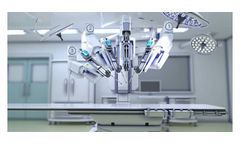Refine by
Regenerative Medicine Articles & Analysis
49 articles found
Induced pluripotent stem cells (iPSCs) have revolutionized the field of regenerative medicine and cellular biology. They are derived from somatic cells that have been genetically reprogrammed back into an embryonic-like pluripotent state. ...
Applications of CRISPR/Cas9 Lentivirus The versatility of CRISPR/Cas9 lentivirus extends across various domains in research and medicine. In cancer research, these vectors allow for the investigation of gene function and the potential development of gene therapies targeting tumor cells. In regenerative medicine, they have the capability to ...
Medical Diagnostics and Disease Treatment: Precision at the Molecular Level The application of enzymes in disease diagnosis represents a revolution in precision medicine. Enzymes like glucose oxidase and horseradish peroxidase form the backbone of diagnostic biosensors, offering high sensitivity and specificity for detecting biomarkers in complex biological fluids. ...
Emerging Research and Challenges Recent research into chemokines has expanded beyond traditional immunology, branching into neurobiology and regenerative medicine. One notable study published in Nature Neuroscience (2021) demonstrated how CX3CL1-fractalkine signaling influences microglial activity in neurodegenerative diseases like Alzheimer’s. ...
These methods enhance diagnostic accuracy and can even identify patterns indicative of specific pathologies. Applications in Medicine Histological image analysis has a broad range of applications in medicine, particularly in oncology, where it aids in the diagnosis and grading of tumors. ...
Introduction to Bioglass Bioglass, also known as bioactive glass, is a type of synthetic material that has revolutionized the fields of medicine and dentistry. First developed in the late 1960s by Dr. Larry Hench and his team at the University of Florida, Bioglass is a glass-ceramic material that has the unique ability to bond with living tissue. ...
ByMatexcel
Creative Bioarray establishes itself as a world leader in life science innovation through its complete range of organoid services that enhance drug discovery, disease modeling, and personalized medicine. Our advanced system delivers high-quality, reproducible organoids to researchers, enabling significant advancements in their scientific work. ...
They are pivotal in the study of dermatological conditions, regenerative medicine, and tissue engineering. Role and Functionality Fibroblasts are the primary cells responsible for synthesizing extracellular matrix components such as collagen, elastin, and glycoproteins. ...
The quantification of genomic DNA is shaping personalized medicine, while tissue oxygenation imaging improves patient monitoring. ...
In studies involving monkeys and a human patient with advanced heart disease, these patches improved cardiac function within three to six months. This regenerative technique, which involves applying lab-grown heart muscle cells to damaged areas, is an exciting prospect for treating heart failure. 4. ...
These materials are extensively utilized in drug delivery systems, tissue engineering, and regenerative medicine. This article presents a detailed comparison of PLGA and PEG copolymers, focusing on five key performance metrics: biocompatibility, drug loading capacity, degradation rate, mechanical properties, and formulation versatility 1. ...
Recent discoveries continue to uncover new cell cycle mechanisms, offering hope for improved cancer therapies and regenerative medicine. As research advances, targeting cell cycle proteins may become a key strategy for treating a variety of human ...
These cells have garnered significant attention in the field of regenerative medicine and therapeutic research due to their unique properties and potential applications. ...
Human umbilical cord cells, particularly those found in Wharton’s jelly, have emerged as a focal point in regenerative medicine and cellular therapy. Wharton’s jelly is a gelatinous substance that surrounds the umbilical cord’s blood vessels, providing structural support and protection. ...
Given their crucial functions, understanding these cells is essential for advancements in ophthalmology and regenerative medicine. The corneal epithelium consists of several layers of cells, primarily composed of keratinocytes. ...
Well, mRNA has become a crucial player, particularly in modern medicine. The COVID-19 pandemic opened the floodgates for mRNA research and applications, showing the world how critical mRNA technology can be. ...
These powerful functions can correct genetic mutations, express specific proteins or enzymes, and make a significant contribution to the development of biotechnology and regenerative medicine. All in all, with ongoing advancements and innovations in gene delivery technology, the future holds great promise for gene therapy and the potential it offers for treating ...
Combining optogenetics with biosensors might enable precise modulation and monitoring of cytoskeletal dynamics in real time, revolutionizing regenerative medicine and personalized therapies. As our understanding of the cytoskeleton deepens, continued technological innovations will unlock new horizons in diagnostics, drug development, and therapeutic ...
Purification and ProcessingCollagen is extracted from the culture system and undergoes necessary subsequent processing, such as fibrosis and cross-linking, to obtain functional protein products.Recombinant Type III collagen, with its high purity, good composition consistency, and no risk of animal source contamination, has a wide range of applications in biomedical research, tissue engineering, ...
On the other hand, researchers are exploring how to harness TNC protein's powers for good. In regenerative medicine, it might be used to enhance tissue repair. For example, bioengineers are investigating how to incorporate TNC protein into biomaterials to promote healing. ...









